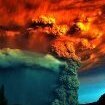All Activity
- Past hour
-
Dude this was never DCs storm check my post on page one. Even nyc is probably gonna get inside subsidence and completely miss our 8.4 inch prediction from the NWS
-
0.5" in Larchmont, NY.
-
and it shreds out
-
Heavy sleet in Chester; down to 23 degrees. Hopefully the cold flushes out some of the warmth so we can grab a few inches to get the kids out sledding tomorrow.
-
Big sleet storm incoming. Road is caving in.
-
This band laid half an inch pretty quick
-

Wounded Duck Strikes Back: Dec 26 & 27th Winter Storm Obs
The 4 Seasons replied to WxWatcher007's topic in New England
-
Insane signature for areas northwest of NYC, myself looks to get in that popcorn convective style precip instead of that nice band
-
Sleeting near Trenton. 27F. Definitely a lot of dry air in the area. Radar shows precipitation falling in NNJ, but nothing reaching the ground while I was there.
-

Wounded Duck Strikes Back: Dec 26 & 27th Winter Storm Obs
weatherwiz replied to WxWatcher007's topic in New England
That was around the time BDL used to not measure correctly -

26th-27th event, coming at us like a wounded duck.
ORH_wxman replied to Go Kart Mozart's topic in New England
Great post. I mentioned yesterday that 12/14/95 was the top analog on CIPS (at least it was yesterday)…similar setup with a very mild center of the country and a weakish disturbance running into a cold dome over New England. That one was a bit further north but same idea. -
Looks like a sleetstorm coming for Somerset
-
Not going to be small, gonna be really small
-
Wounded Duck Strikes Back: Dec 26 & 27th Winter Storm Obs
snowman21 replied to WxWatcher007's topic in New England
Vis is maybe 1/2 mile in this band over the panhandle of CT. Accumulating nicely. -
Snowing nicely now. This band is the real deal
-
Just uncanny that you all talked about the 1982 ice storm, and the 18z GFS rolls with that. FWIW, the 12z GEM had almost the exact solution. Long way out there at 200 hours, but it is inside of d10.
-

26th-27th event, coming at us like a wounded duck.
Damage In Tolland replied to Go Kart Mozart's topic in New England
There’s sleet near NYC . Maybe it mixes out for a time -
Get out and enjoy it if you can. It's glorious outside.
-

Wounded Duck Strikes Back: Dec 26 & 27th Winter Storm Obs
The 4 Seasons replied to WxWatcher007's topic in New England
Airport totals are really suspect from that storm. ORH and BDL specifically. But those were the official numbers so.. -
Western Putnam: Heavy snow. Vis < 1/4 mile. 1/2" in 20 minutes and 1" in 30 minutes. Can't keep up with measurements.
-
OBS/Totals for 12/26-27 Storm
SomeguyfromTakomaPark replied to jm1220's topic in New York City Metro
1.5 inches down already in Yorktown, SN+ -
18z GFS shaping up for a nice small hit on the 4th
-
Mix with graupel falling TR / Manchester border. 30 / 22
-

26th-27th event, coming at us like a wounded duck.
CoastalWx replied to Go Kart Mozart's topic in New England
Lot of weenies in NE PA arguing for colder solutions only to get ZR now. -











